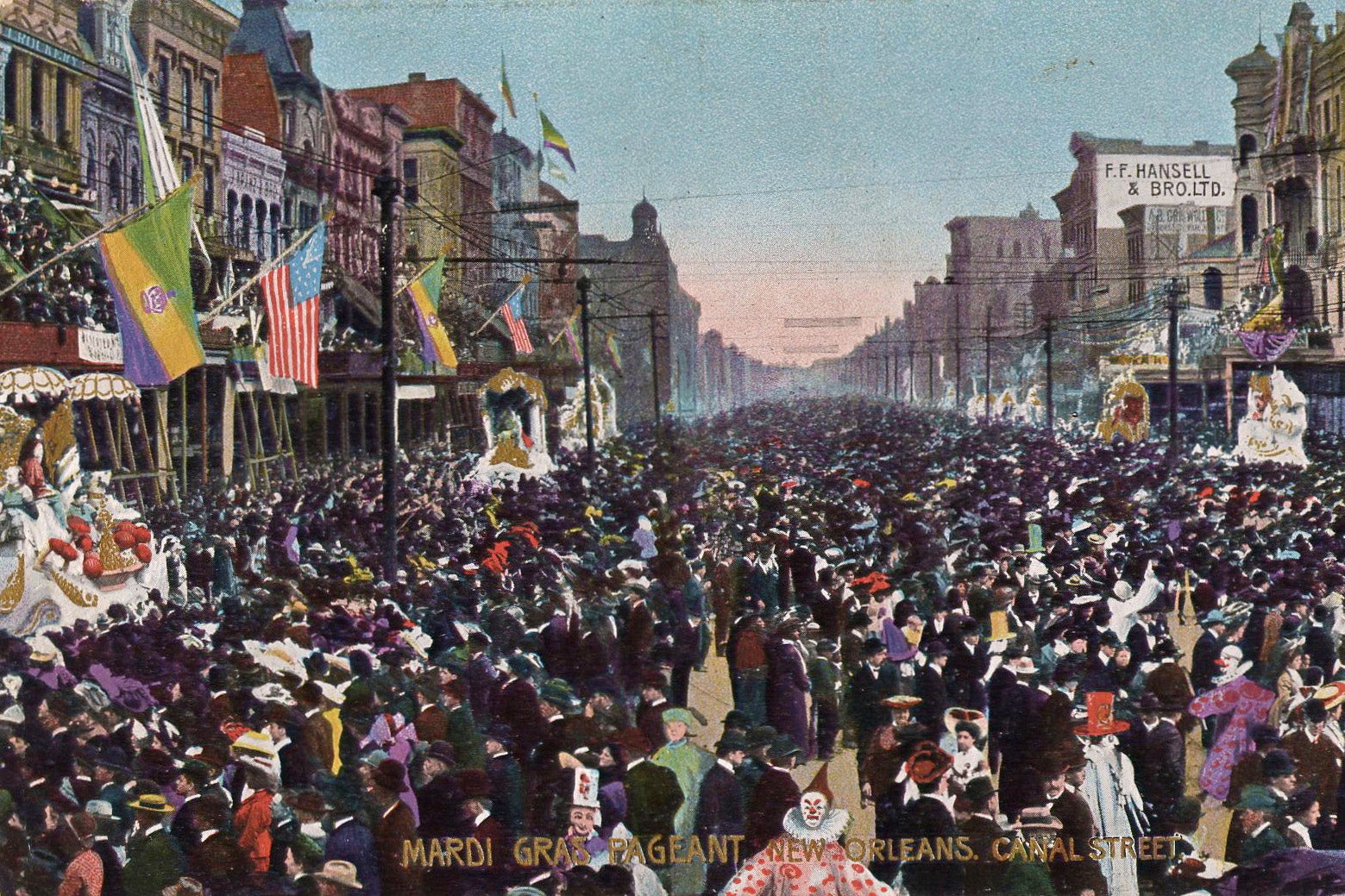Each year, people from around the world flock to New Orleans for Mardi Gras. The city has a parade tradition like nowhere else in the United States. As Leslie Gale Parr explains, that’s a product of its unique multicultural history.
In the nineteenth century, Parr writes, life in New Orleans was chancy. Diseases carried by dirty water and mosquitoes were common. And the city offered few benefits to its residents, leaving the sick, as well as widows and orphans, in need of support.
So communities organized to provide mutual aid. Immigrants arriving from around the world formed benevolent associations based on shared language and culture: The Societé Francaise, the Ibera Benevolent Association, the Shamrock Benevolent Association, and many more. By 1900, German-Americans alone had created more than twenty-five organizations in the city. Free people of color, gens de couleur libres, also had dozens of mutual aid groups.
After the Civil War, many newly free Black southerners moved to the city, where neither the local government nor the Freedmen’s Bureau offered much material support. These new residents formed more than 200 of their own benevolent societies by the 1880s. In 1888, a New Orleans medical journal reported that four-fifths of Black New Orleans residents belonged to such an organization.
At a time before health and life insurance was common, professionals such as druggists, undertakers, and doctors competed to provide services to a society’s members at fixed prices. Often, members paid a quarterly fee to retain a physician’s services. If a member fell ill, the society could call in the doctor. Fellow members might also take turns looking after them, help clean their house, and provide them with cash from the society’s coffers.

When a member died, Parr writes, societies honored them with a funeral, which all were expected to attend in a particular uniform. The celebrations of life frequently featured music, and by the 1850s, they had evolved into parades, often with brass bands and mourners in extensive regalia carrying the society’s banner.
Organizations also held parades to mark all sorts of holidays and festivals, and for many other reasons, too. When a water works was completed in 1834, a brass band accompanied fifty workers wheeling carts down the streets. By the 1880s, parades were near-daily events in the city. For Black New Orleans communities in the Jim Crow era, they also became a form of protest, challenging segregation by openly marching through public streets all over the city.
Weekly Newsletter
Eventually, the rise of commercial insurance and expanding public benefits reduced the need for mutual aid. Many people began to resent the time required to attend meetings, care for sick members, and attend funerals. Gradually, benevolent associations’ purpose shifted to creating social events.
“The benevolent associations of the nineteenth and early twentieth centuries offer shining examples of self-help, racial uplift, community-building, and cultural innovation,” Parr concludes. “To a great extent, the earlier societies live on in the social aid and pleasure clubs of the present.”
Support JSTOR Daily! Join our new membership program on Patreon today.







